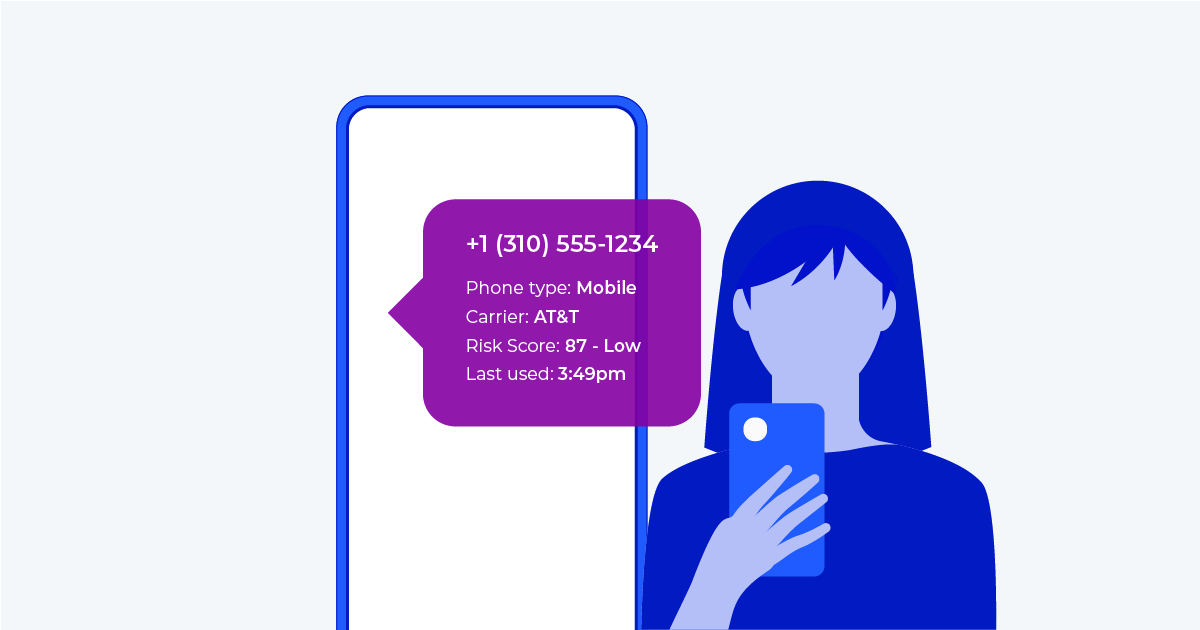
Fraud is one of the most significant financial risks facing businesses today. It not only drains cash and resources from companies, but it also directly impacts consumers. Phishing, identity theft, and other threats can harm customers, while malicious actors use these tactics to steal from service providers. This danger is not limited to any specific region; businesses worldwide are grappling with the cost of fraud today.
With the rise of AI tools, continued interconnection via the internet, and other factors, fraudsters now have more resources at their disposal than ever. Some have even begun dedicating years to crafting false online identities capable of evading fraud control measures. So, what is the actual cost to businesses facing these threats? A closer examination of the numbers and cross-industry impacts highlights the need for more robust security and proactive protection measures.
Table of Contents
- The impact of fraud on businesses
- The growing financial strain of fraud on specific industries
- Industry-specific threats
- How fraud damages reputations and breaks trust
- Approaches to combatting fraud
- How Telesign can help businesses reduce fraud-related losses
The impact of fraud on businesses
Fraud is not a one-time risk facing companies: it’s an ongoing concern. Fraudsters can attempt to exploit a business’s systems for illicit gain at any time, and often do so repeatedly. Recent statistics reveal the extent of this threat and its significant impact.
In one survey of merchants, nearly half of respondents reported noticing an increase in scams targeting their business or customers. E-Commerce merchants were the most frequently targeted, with 63% of them reporting a more than 5% increase in scams year over year.
While e-Commerce has been hit hardest, fraud continues to affect many industries. The financial sector, for instance, may lose up to 9% of its revenue annually due to digital fraud. Financial service providers have reported a 57% rise in fraud threats in North America alone. Even the hospitality sector has faced challenges, with potentially fraudulent chargebacks rising by 30% from 2022 to 2023.
The growing financial strain of fraud on specific industries
The cost of fraud is significant. In 2023, e-Commerce merchants worldwide lost an estimated $48 billion to fraud. Global fraud losses spiked by nearly 16%, representing a 2.9% total revenue loss. While this figure is lower than in recent years, the threats and their consequences remain significant. Fraud-related costs can escalate as merchants scramble to respond. For every $100 in illicit orders, a merchant may incur losses of over $207.
Controlling the cost of online fraud is a challenging endeavor. The average merchant relies on numerous tools for fraud detection. One study found that companies typically use at least five fraud protection tools. 75% of merchants surveyed indicated that they would increase their budget allocations in this area.
In the financial sector, the costs and losses incurred from fraud can be even more substantial. Losses often far exceed the initial value of fraudulent transactions. Financial service providers might incur expenses up to four times the amount of the fraudulent transactions—translating into annual losses of 7% or more of a company’s annual revenue. In one survey of organizations affected by fraud, average losses exceeded $3.7 million.
Efforts to control these losses involve both anti-fraud tools and consumer education. For example, nearly half (about 46%) of hospitality businesses say they’ve expanded consumer educational resources about fraud. If consumers can recognize scams and attempts at fraud, companies may fare better in today’s threat environment.
Industry-specific threats
The types of fraud affecting these industries vary, but their financial impact is clear. For example, the increasing frequency of attempted fraud against e-Commerce merchants creates significant economic challenges. Safeguards and mitigation efforts often require substantial investment.
Fraudsters continue to find new ways to circumvent protections or innovate in their criminal methods. For instance, the rise of numerous new payment methods provides offenders with fresh opportunities for fraud. Digital payment fraud accounted for nearly 37% of 2023 losses, according to one estimate.
Financial service providers face unique threats, especially from the rise of synthetic identities. These false identities may have several years of cultivated digital history, making them more difficult for anti-fraud measures to detect. Routine identity theft and weakened mobile verification processes make it harder for financial institutions to identify and thwart fraud. Account takeovers in U.S. financial services soared by 61% compared to the previous year.
Account takeovers and synthetic identities are also severe threats in the hospitality industry. Fraudsters may use fake identities and credit information to make expensive reservations and then exploit chargebacks to steal funds before the hotel discovers fraud.
In each of these industries, the effects of fraud can extend beyond financial losses.
How fraud damages reputations and breaks trust
Telesign’s 2024 Trust Index report found that consumers have strong expectations for how businesses handle data and safety. A vast majority of American respondents, around 87%, believe that companies have a duty to protect users’ private data. When consumers experience account takeovers and other forms of fraud, they may feel their trust has been violated.
In the age of AI, the risk of consumers encountering fraud is increasing. However, 44% of survey respondents didn’t think AI would put them at greater risk of fraud. Still, generative AI has been a game-changer for fraudsters. In the 12 months following the release of ChatGPT to the public, malicious phishing attempts increased by over 1200%. It has become easier than ever for fraudsters to trick consumers into handing over their credentials. Even business insiders aren’t immune, with credential phishing rising by over 900%.
Organizations that struggle against fraudsters risk their reputation. Consumers place a high value on trust in their service providers, but becoming a victim of fraud can leave an individual feeling unprotected. Companies that report significant data breaches and the theft of sensitive consumer information may suffer reputational damage. This loss of trust can impact a business’s bottom-line in addition to the costs of fraud.
Approaches to combatting fraud
Organizations need to push back against fraud with advanced anti-fraud technologies and the emergent power of AI. Achieving effective fraud protection lies at the intersection of engaged consumers and well-defended business processes. Strategies should focus on preventing unauthorized account access, combatting takeover fraud, and implementing robust user authentication.
In 99% of successful attempts to intrude on user accounts, multifactor authentication (MFA) was not enabled. MFA, whether through authenticator apps, SMS messages or other methods, is a vital tool today. Users should be strongly encouraged to secure their accounts. Providing better education on the benefits of MFA and streamlining the authentication process can help increase adoption.
AI and machine learning tools can further enhance this process. Models trained in fraud detection can rapidly ingest, compare, and analyze many factors, including user behaviors, browser signatures, and mobile device signatures. Biometric authentication technologies, such as facial recognition, can also support AI-powered anti-fraud measures.
Regardless of the approach an organization chooses, it should not rely on a single methodology for protection. Layering anti-fraud measures creates multiple lines of defense. For example, AI tools could detect that a sign-in attempt is anomalous compared to previous user interactions and prevent a potential account takeover. Irregular behavior during multifactor authentication could also trigger warnings.
More thorough Know Your Customer (KYC) procedures, advances in AI, and other technologies provide organizations across industries with the tools they need to fight fraud effectively.
How Telesign can help businesses reduce fraud-related losses
Telesign offers effective solutions that enhance fraud protection throughout the customer journey, enabling businesses to establish a stronger anti-fraud framework.
- Phone ID: Leverage mobile identity signals to verify each customer interacting with your services. Our Phone ID API enables businesses to cut down on fraud-related losses by delivering detailed and actionable phone number insights. The API enhances fraud risk evaluation through identity signals such as subscriber status and SIM swap detection. These capabilities help reduce the prevalence of fake accounts and strengthen authentication confidence, allowing businesses to make informed decisions with speed and precision. Telesign helps businesses secure their digital environments and ensure safe interactions with their customers.
- Intelligence: Use risk recommendations to combat fake accounts and detect fraudulent activity when it occurs. Intelligence helps businesses minimize fraud-related losses through adaptive machine learning, risk assessment, and fraud detection capabilities. Spot fake account creation attempts, synthetic identity fraud, and international revenue share fraud (IRSF). By leveraging risk signals and real-time analytics, Intelligence helps streamline onboarding processes, allowing legitimate customers seamless access while keeping potential threats at bay.
- Verify API: Reduce fraud-related losses by enhancing security and verifying users. Implement a robust MFA process across 7 communication channels through verified sender IDs, significantly reducing the risk of social engineering and phishing attacks. Verify API’s multichannel fallback capability guarantees continuity and reliability of one-time passcode delivery, preventing downtime and ensuring secure customer interactions. The streamlined verification process not only protects against the creation of fraudulent accounts but also strengthens your digital ecosystem, allowing businesses to maintain secure and trusted connections with their customers.
Take action to reduce the cost of fraud. With Telesign’s solutions tap into advanced technology and the power of AI to mitigate risks. Reduce the financial impacts of fraud and seamlessly enhance the experience you provide to your customers—chat with our experts today.



